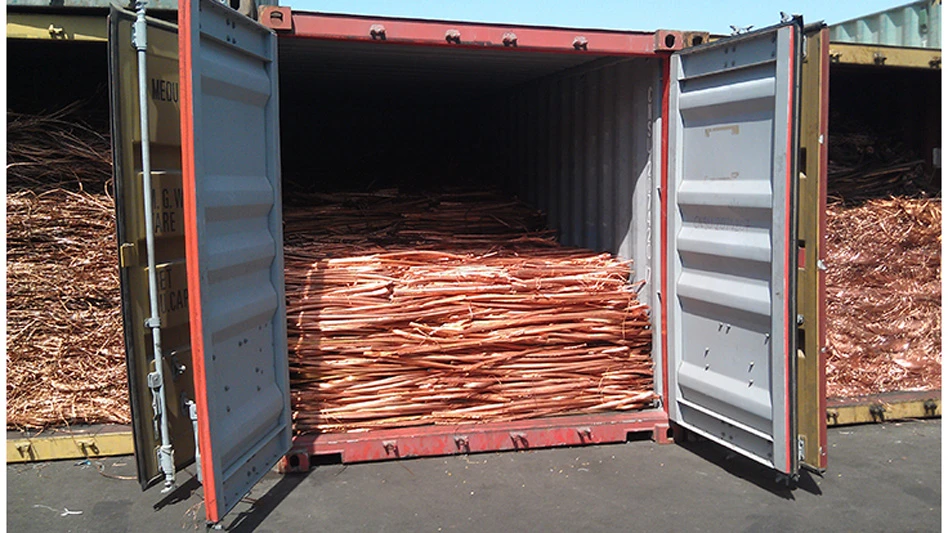The three types of scrap handlers – crawler, wheeled and stationary - each have a different type of stability and level of mobility. Each type of machine has its place in the scrap processing industry, and many recyclers use all three configurations to help them achieve the highest cycle times and efficiencies possible.
ON THE MOVE
Environmental concerns, the need for more flexibility in the yard and a consolidation trend in the industry that’s producing bigger yards, are all trends pushing more processors toward wheeled scrap handlers. As a result, scrap handlers are literally on the move today. Wheeled handlers can move around the yard more quickly, and as well as moving off the yard to get at scrap outside the boundaries of the operation.
"The trend toward wheeled handlers is really gaining momentum," says one dealer of scrap handlers. "I would say that nearly every yard today has at least one wheeled handler, and those that have completed a lot of paving have numerous wheeled handlers."
In Europe, about 90 percent of the scrap handlers are of the wheeled configuration, according to manufacturers who sell equipment there.
While there are currently no statistics on the percentage of paved scrap yards in the United States, it seems that the trend toward paving is being pushed by environmental concerns, particularly stormwater regulations. The EPA has designated about 180 best management practices for scrap yards to control stormwater runoff, including paving.
"We have our entire nonferrous operation under roof, and our ferrous operation outside is entirely paved," says one scrap processor.
Scrap processors are finding they need to treat their pavement with care. "You don’t want to be dropping large, heavy pieces of scrap on the pavement, and you don’t want to tear it up with crawlers," says another processor. "So, we have turned to tired handlers to work on the pavement, and if a crawler needs to work on the pavement, we instruct the operator to be extra careful when moving and turning."
Overall, a well kept, paved yard is an ideal situation for a scrap handler with tires, because the handler can easily and quickly move from one area to another on the pavement.
Some handlers are also designed to maneuver in tight spaces. These new breed of handlers can move quickly around the yard because they have small footprints and dual-axle steering.
CRAWLERS
But paving the yard doesn’t necessarily mean that the company has to get rid of all of its crawlers. One yard has added rubber pads on the crawler’s tracks to prevent unnecessary damage to the pavement. "The pads have worked well, and we paved our yard with extra-thick concrete so that it is more durable," claims the processor.
Others, however, warn that adding rubber pads to the tracks of a crawler can be dangerous in inclement weather. "It is certainly fine in warmer climates, but if the pavement is slick or icy, the crawler can loose traction and slip, and you don’t want that happening when you are handling scrap," says one manufacturer.
Still, there are plenty of non-paved yards out there, and proper paving can accommodate scrap handlers with a crawler configuration.
"It’s still the most durable design on the market," says a manufacturer. "Scrap processors like that."
A crawler configuration also keeps the handler’s center of gravity lower, eliminating the need for outriggers that are common with wheeled handlers.
Another area to look at is the overall design of the undercarriage. "You want the underneath of the handler to be free of obstructions and dangling hydraulic lines," says one manufacturer.
STATIONARY CRANES
While the trend appears to be toward more versatile and mobile scrap handlers, there is still a solid place for the stationary crane. One advantage of a stationary handler is the ability to power it with an electric motor, eliminating exhaust gases at the yard. In addition, the energy savings can be as much as 75 percent compared to operating mobile scrap handlers, says one manufacturer, and the handler is much quieter than one operated by a diesel. Another advantage is normally increased cycle time. "If there is a heavy-duty shredder or shear that needs to be constantly fed, it makes sense to have a dedicated scrap handler," says a processor.
Another advantage is reach. Since the handler is secured to the ground, the reach of the handler can be significantly extended.
And with equilibrium cranes, the reach can go even further. These cranes use a moveable counterweight that is mechanically attached to the stick. As the counterweight moves up and down, the stick moves down and up. "This design keeps the crane in perfect balance at all times, reducing stress on the entire system," says a manufacturer.
While stationary cranes are popular in larger yards and at yards with access to port facilities, other types of large yards also are considering them. The reach of one such crane can equal that of as many as four shorter-reach scrap handers, according to one manufacturer.

Explore the June 1997 Issue
Check out more from this issue and find your next story to read.
Latest from Recycling Today
- APR, RecyClass release partnership progress report
- Clearpoint Recycling, Enviroo sign PET supply contract
- Invista expanding ISCC Plus certification program
- Redwood partnership targets recycling of medium-format batteries
- Enfinite forms Hazardous & Specialty Waste Management Council
- Combined DRS, EPR legislation introduced in Rhode Island
- Eureka Recycling starts up newly upgraded MRF
- Reconomy Close the Gap campaign highlights need for circularity





